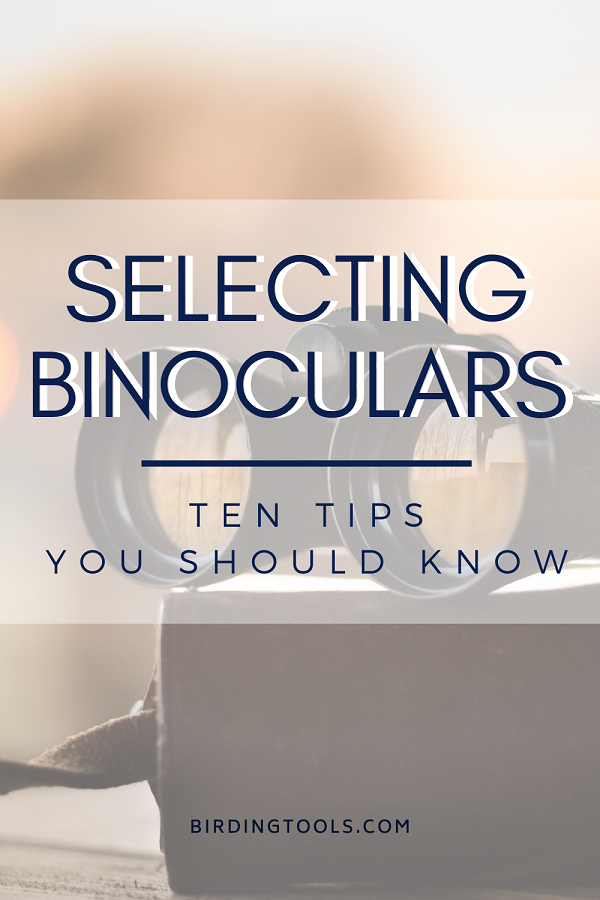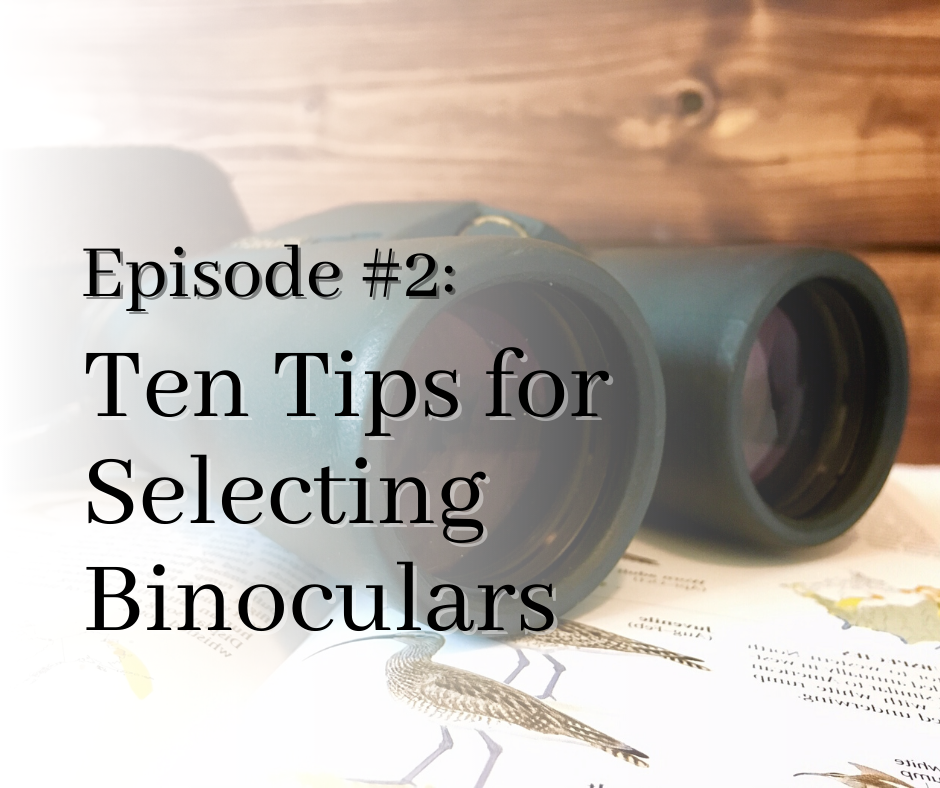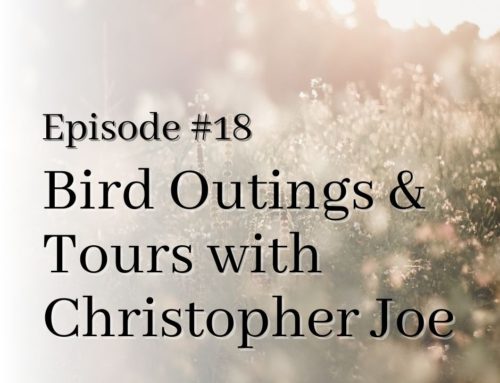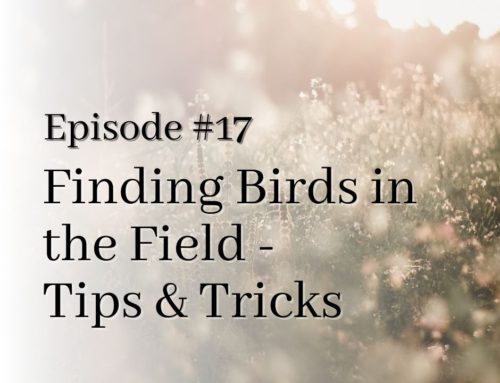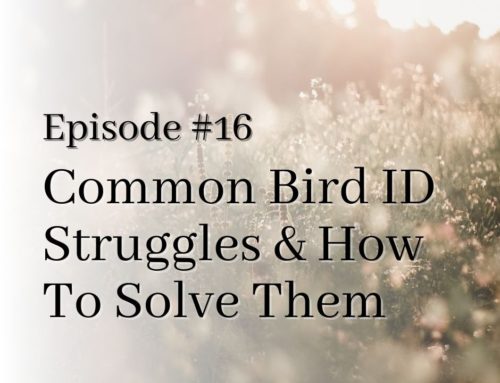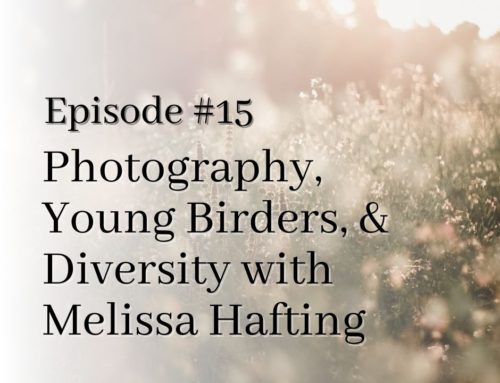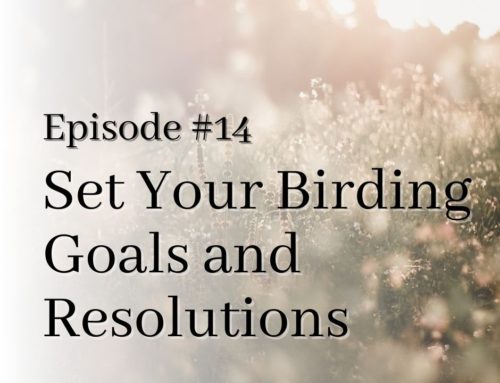Welcome to Episode 2 of the Birding Tools Podcast.
For those who are still looking at selecting binoculars to go birding, and for those who already have their binoculars, listen up.
This week, I delve into ten things you should keep in mind when selecting a pair of binoculars.
Binoculars are one of the most important tools you’ll need for birding, other than your field guide. You’ll also need love, patience, and enthusiasm for birds and being outside.
Because of this, it’s important that your binoculars fit YOU well and serve you the best to give you the most optimal time looking at birds.
Here’s how the episode goes
[1:15] Anatomy of binoculars. To understand some of the terms mentioned in this podcast and post, I’ve laid out a few of the key features found on binoculars.
[3:00] First, get a pair of binoculars that are minimum 7-power magnification. The magnification number allows you to see birds closer, and in selecting binoculars, you’ll want that number to suit you well. This means you can easily see the birds you’re looking at, but they aren’t so close that you can’t focus well.
[4:10] Have the binocular lens diameter be around five-times greater than the magnification. Having a good ratio of lens diameter to magnification allows for a more optimal bird-viewing experience. For example, in a pair of 8×42 binoculars, the ratio is just about right to give a nice view of the birds through the lenses.
[5:44] The binocular’s weight is more important the longer you plan to wear them around your neck. Over time, heavier binoculars can take a toll on you and cause neck strain. A good solution to this, too, is to get a good binocular harness.
[6:35] Test the binocular barrels to see if they flex easily without slipping. Selecting binoculars that slip too easily will cause you frustration down the road, so check this before purchasing.
[7:25] Opt for color-coated binocular lenses to allow for more light to enter the binoculars with less glare. Don’t worry, up close, the lenses won’t appear anything other than clear (or, at least they shouldn’t!).
[7:58] Next, hold the binoculars to your eyes and see if the image formed is a clear, single circle. You may need to adjust the diopter to get the image perfect, but otherwise, you shouldn’t have an issue getting a clear image. If you do, test other binoculars to see if you get different results – the binoculars you selected may not fit you well. That’s the key – selecting binoculars that are customized for YOU!
[9:37] For eyeglasses wearers especially, get binoculars that have foldable or expandable eyecups. Having the distance between your eyes, with your glasses on, and the binocular lens be around 15 mm is ideal.
[10:30] Test your binoculars to ensure you see clearly close by, around 20-feet away, and far away, around two blocks away. You’d be surprised how many binoculars don’t allow you to see up close clearly. This is important for seeing birds hidden in a nearby tree or bush!
[10:55] Finally, see whether your binocular lenses show distortion on the edges of the field of view. If the image is distorted on the edges of your view compared to the direct center, this could disrupt your ability to see birds easily through the binoculars.
You can also read more about each of these items to start birding on our Get Started page!
Subscribe & Review Wherever You Get Your Podcasts
Are you subscribed to my podcast? If you’re not, I want to encourage you to do that today. I don’t want you to miss an episode! Subscribe wherever you listen to your podcasts.
Now if you’re feeling extra loving, I would be really grateful if you left me a review over on iTunes, too. Those reviews help other people find my podcast and they’re also fun for me to go in and read. Thank you!
Links Mentioned in this Podcast
Lots of great beginner’s tools and resources are mentioned in this episode. Since we are based in North America, our focus tends to be on North American birds and resources.
However, if you need a hand finding the best resources for your country or region, please reach out so we can help you start birding on the right foot.
- Ten Things to Know about Your Binoculars Birding Tools Guide
- Nikon Monarch 8×42 binoculars (affiliate link)
- Binocular Chest Harness (affiliate link)
- Birding Tools Facebook Page
- Check out these distributors for binocular recommendations:
Other Ways to Enjoy this Post
We so appreciate you listening to the Birding Tools Podcast! Please see the links below for other ways to enjoy this material.
